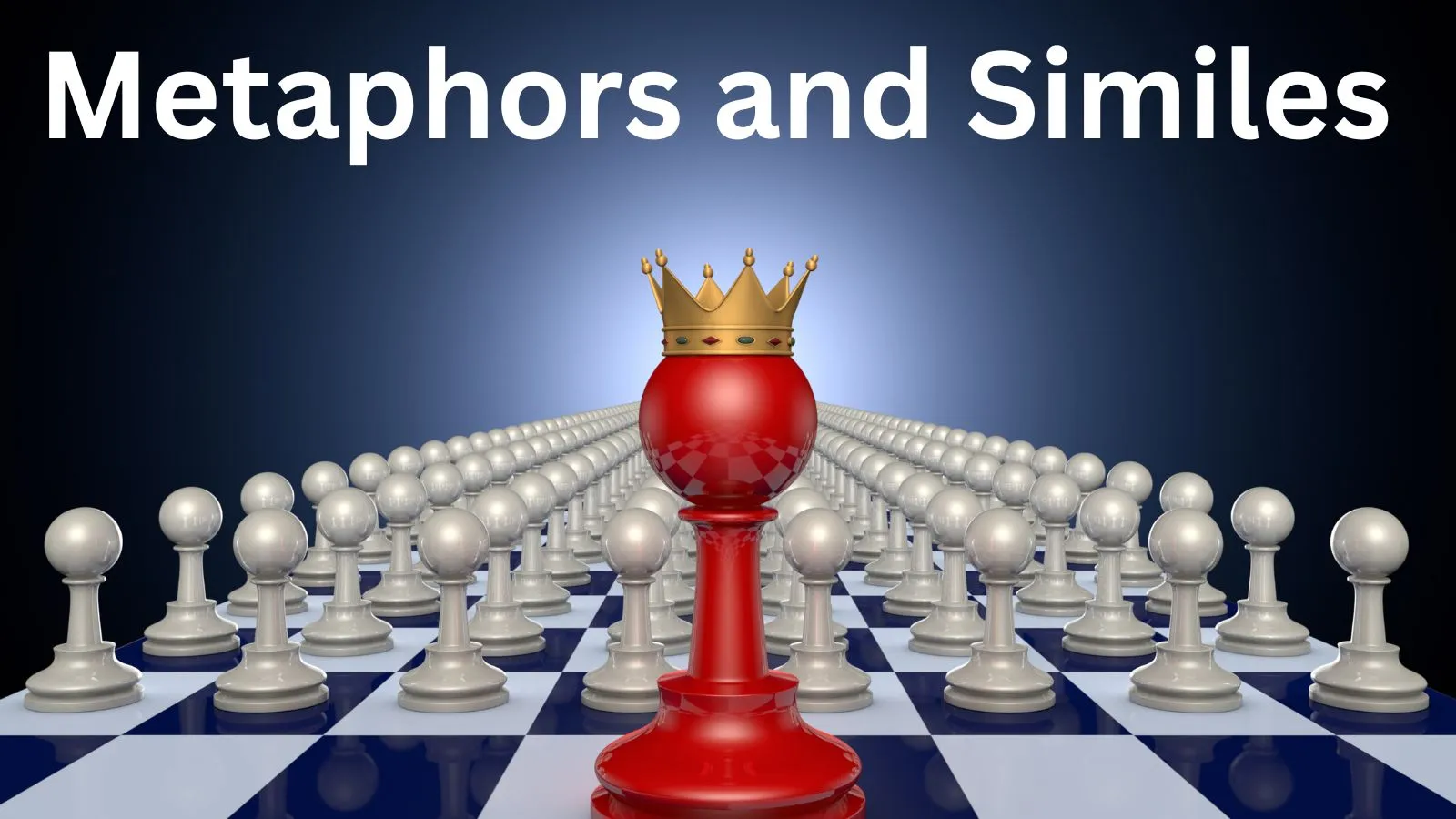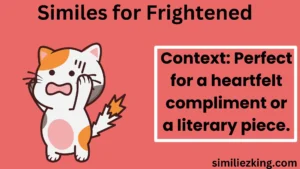Metaphors and similes are powerful literary devices used to compare one thing to another, helping to explain concepts, evoke emotions, or provide clarity. These figures of speech enrich both writing and speech, making communication more vivid and engaging. However, there are numerous alternatives to the phrase “word for metaphors and similes” that can be used depending on context, tone, and audience. Understanding the different ways to express metaphors and similes allows you to elevate your communication, making it more polished, professional, or casual as the situation demands.
In this article, we will explore over 15 alternatives to the phrase “word for metaphors and similes,” focusing on how to incorporate them effectively into both formal and informal settings. Additionally, we will provide examples and explain the nuances of tone, ensuring that you are equipped with the right language for various situations. This article aims to make you a more versatile communicator, whether you’re writing creatively or engaging in everyday conversation.
1. Figurative Language
One of the most common and versatile alternatives to “metaphors and similes” is “figurative language.” Figurative language refers to expressions that convey meanings beyond their literal sense, including metaphors, similes, personification, and hyperbole. It is often used to make writing or speech more colorful and expressive.
Example:
- Formal: “The use of figurative language in poetry can evoke deep emotions.”
- Casual: “He loves to use figurative language when telling stories.”
2. Analogies
Analogies are another excellent substitute. An analogy is a comparison between two things for the purpose of explanation or clarification. While metaphors and similes are specific forms of analogy, the term “analogy” can be used more broadly.
Example:
- Formal: “The analogy between the human heart and a pump is frequently used in biology textbooks.”
- Casual: “She explained her point through an analogy that made everything clear.”
3. Figures of Speech
“Figures of speech” is a more technical term encompassing all rhetorical devices, including metaphors, similes, and other stylistic expressions. It’s a great term when discussing language creatively or analytically.
Example:
- Formal: “Figures of speech play a crucial role in enhancing the persuasive power of speeches.”
- Casual: “You can use a lot of figures of speech in your writing to make it more interesting.”
4. Creative Comparisons
“Creative comparisons” is a more casual way of referring to metaphors and similes. This phrase is perfect for non-technical contexts where the focus is on the creativity involved in making comparisons.
Example:
- Formal: “Creative comparisons often lead to more compelling storytelling.”
- Casual: “I love how she uses creative comparisons to describe everyday things.”
5. Symbolism
While symbolism typically involves deeper meanings, it can sometimes be used as a broader concept that overlaps with metaphors and similes. Symbolism uses objects or elements to represent something beyond their literal meaning.
Example:
- Formal: “The symbolism in literature often reflects societal norms and values.”
- Casual: “He used symbolism in his art to convey a deeper message.”
6. Implied Comparisons
This phrase refers to subtle, often indirect comparisons where one thing is compared to another without directly stating it. This can encompass metaphors and similes that aren’t explicitly marked by “like” or “as.”
Example:
- Formal: “Implied comparisons in the text require readers to engage more critically with the material.”
- Casual: “Her implied comparisons made her argument more persuasive.”
7. Symbolic Language
Similar to “figurative language,” “symbolic language” refers to the use of symbols and metaphors to convey deeper meanings. It’s a slightly more specific term than figurative language but still conveys the idea of non-literal communication.
Example:
- Formal: “The author’s use of symbolic language creates layers of meaning in the narrative.”
- Casual: “She loves using symbolic language to make her poems feel more profound.”
8. Imagery
Imagery refers to the use of vivid or descriptive language that appeals to the senses. While it’s broader than just metaphors and similes, imagery often incorporates these elements to help create a vivid mental picture.
Example:
- Formal: “Imagery is a powerful tool in poetry, where the poet uses metaphors and similes to evoke a sensory experience.”
- Casual: “Her writing is full of beautiful imagery that makes everything feel alive.”
9. Descriptive Comparisons
“Descriptive comparisons” is a practical alternative to “similes and metaphors” that focuses on the purpose of these figures of speech: to describe things in more detailed and engaging ways.
Example:
- Formal: “Descriptive comparisons help the writer create more dynamic and engaging narratives.”
- Casual: “I like how he uses descriptive comparisons to make everything sound so vivid.”
10. Poetic Devices
“Poetic devices” refers to the various techniques used in poetry, including similes, metaphors, alliteration, and rhyme. This term is often used when discussing writing from a creative or artistic standpoint.
Example:
- Formal: “Poetic devices such as metaphors and similes are essential in crafting impactful poetry.”
- Casual: “She’s really good at using poetic devices to enhance her poems.”
11. Rhetorical Devices
Rhetorical devices, like metaphors and similes, are used in both speech and writing to persuade, inform, or entertain. This phrase has a formal connotation and is often used in discussions of public speaking or literature.
Example:
- Formal: “Rhetorical devices like similes and metaphors are fundamental in effective communication.”
- Casual: “He loves using rhetorical devices to make his speeches more engaging.”
12. Expressive Language
“Expressive language” refers to language that is used to convey emotions, ideas, or thoughts in a colorful or imaginative way. This broad term includes metaphors and similes, but it can also encompass a variety of other figurative expressions.
Example:
- Formal: “Expressive language is vital for writers who want to connect emotionally with their readers.”
- Casual: “Her use of expressive language made the conversation feel more intimate.”
13. Linguistic Comparisons
Linguistic comparisons emphasize the role of language in making comparisons, whether through similes, metaphors, or analogies. This term can be used in more academic or analytical contexts.
Example:
- Formal: “Linguistic comparisons are often used in comparative literature to highlight cultural differences.”
- Casual: “He loves to make linguistic comparisons when talking about different languages.”
14. Metaphoric Expressions
This phrase focuses on expressions that involve metaphors. While similes are sometimes included, this term is specifically oriented toward metaphorical comparisons, which are more implicit and direct than similes.
Example:
- Formal: “Metaphoric expressions are commonly used in literature to convey abstract ideas.”
- Casual: “I’ve always admired her use of metaphores, especially when she talks about nature.”
15. Comparative Imagery
This term specifically refers to imagery created through comparisons, whether through metaphors or similes. It’s a more focused term, used when discussing how comparisons create vivid imagery.
Example:
- Formal: “Comparative imagery can transform a mundane description into a compelling narrative.”
- Casual: “The comparative imagery in his stories really brings the scenes to life.”
16. Metaphorical Language
“Metaphorical language” refers to the use of metaphors to convey meaning or express creativity. It is used widely in literature, speech, and everyday conversation to introduce abstract or complex ideas in relatable terms.
Example:
- Formal: “Metaphorical language in advertisements can powerfully influence consumer perceptions.”
- Casual: “He loves to use metaphorical language when describing his travels.”
Conclusion
Understanding and using various terms for metaphors and similes can enhance your communication skills, whether in writing or in everyday conversations. By exploring alternatives such as “figurative language,” “analogies,” “symbolism,” and “creative comparisons,” you can elevate your language to suit different contexts and audiences. Whether you’re writing a professional report, crafting a compelling story, or simply engaging in a casual conversation, knowing how to effectively use these devices will make your language richer and more expressive.



